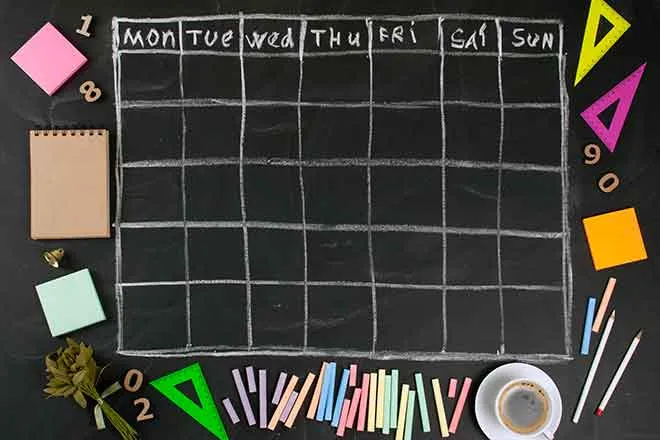
School meal changes are coming in the 2022-2023 school year
Many families will see changes in school meals this fall. School nutrition professionals have worked tirelessly to get healthy food to children during COVID-19, and they will keep working hard to serve children healthy meals this coming school year. As we all get through this change, we ask everyone to be patient with school nutrition professionals and thank them for working to help children during such a tough time. The U.S. Department of Agriculture (USDA) fully supports the school leaders and school meal heroes running the school meals programs. Together, we will keep working to support schools and making sure children can get healthy meals in the coming school year.
Will all meals be free?
Schools had some flexibilities during COVID so they could serve all kids free meals. Some of those options expired, so many schools can’t serve all meals free anymore. Instead, families will do what they did before COVID. Schools will take applications and use family income to qualify kids for free, reduce-price, or paid meals.
Some schools use a program called the “Community Eligibility Provision” that helps them serve all meals free. Contact your local school to see if they are part of that program.
Is there any way for schools to continue serving meals to all students for free?
Some schools use a program called the “Community Eligibility Provision” that helps them serve all meals free. Contact your local school to see if they are part of that program.
My child’s school is going to start charging for meals again, but I can’t afford to pay. Is there a way my child can get meals for free?
Yes. There are still many ways children can get free meals. Children are automatically eligible for free meals if anyone in their household gets SNAP, TANF, or FDPIR benefits. In some states, families with Medicaid may also qualify, depending on their income. Schools should let you know if your child is automatically eligible.
You can also fill out an application to qualify for free or reduced-price meals. Children experiencing homelessness, children in foster care, runaway youth, or children of migrant workers all qualify for free school meals when their household fills out an application. Children can also qualify for free or reduced-price meals through an application if their household’s income is under a certain limit. Schools will help you understand if you qualify for free or reduced-price meals based on the information you put on their school meal application.
For example, a child in a family of four with a yearly income of $51,338 or less would qualify for reduced-price meals. Families that believe their income is under the limit should fill out an application for free or reduced-price meals through their school.
Household Size | Maximum Annual Household Income for Reduced Price Meals, School Year 2022-23* |
1 | $25,142 |
2 | $33,874 |
3 | $42,606 |
4 | $51,338 |
5 | $60,070 |
6 | $68,802 |
7 | $77,534 |
8 | $86,266 |
For each additional family member, add | $4,720 |
* Households in Alaska and Hawaii have higher limits.
Children who do not qualify for free or reduced-price meals may pay full price for a healthy breakfast or lunch at school.
It seems like my child’s school isn’t always serving what shows on the school menus. What is going on?
Schools are facing the same challenges many grocery stores and other places are having with getting all the food and supplies they need. When this happens, school nutrition professionals are doing everything they can to serve healthy meals to your child. Sometimes that means needing to swap out some foods for others because some foods are easier to get. Please be patient with the school nutrition professionals striving to serve our kids. They are committed to making sure our kids get the healthy meals they depend on during this challenging time.
School meals have to meet strong nutrition standards, and schools are continuing to work hard to serve students the nutritious, delicious meals they need to learn and grow.
How can parents and guardians help their children get healthy food when they are not in school?
USDA’s Team Nutrition has many resources to help parents and caregivers serve healthy food and teach children about eating healthy.
- Meet MyPlate introduces families to the MyPlate icon and includes a MyPlate menu planner. [Spanish Version]
- Snack Time! provides information about choosing snack foods and beverages with less solid fat, added sugars, and sodium (salt). Children can count family members' favorite ways to drink water. [Spanish Version]
- Be Your Best With Breakfast encourages families to eat breakfast and to check out the School Breakfast Program at their school (if available). A fun breakfast tracker and badge are included. [Spanish Version]
- Welcome to School Lunch! shares information about how school meals have gotten healthier and includes an activity for children to sort lunch foods into the five food groups. It also includes a “Color Adventure” challenge where families taste-test new fruits and vegetables of different colors. [Spanish Version]
- Move, Play, Have Fun! offers a table of fun physical activities that families can cross off as they complete them. [Spanish Version]
For other resources and food assistance programs, reach out to USDA’s National Hunger Hotline at 1-866-3-HUNGRY (for English) or 1-877-8-HAMBRE (for Spanish). To find free summer meals for kids near you, visit USDA’s Find Meals for Kids site. In most states, you can also call 211 for help and services.












